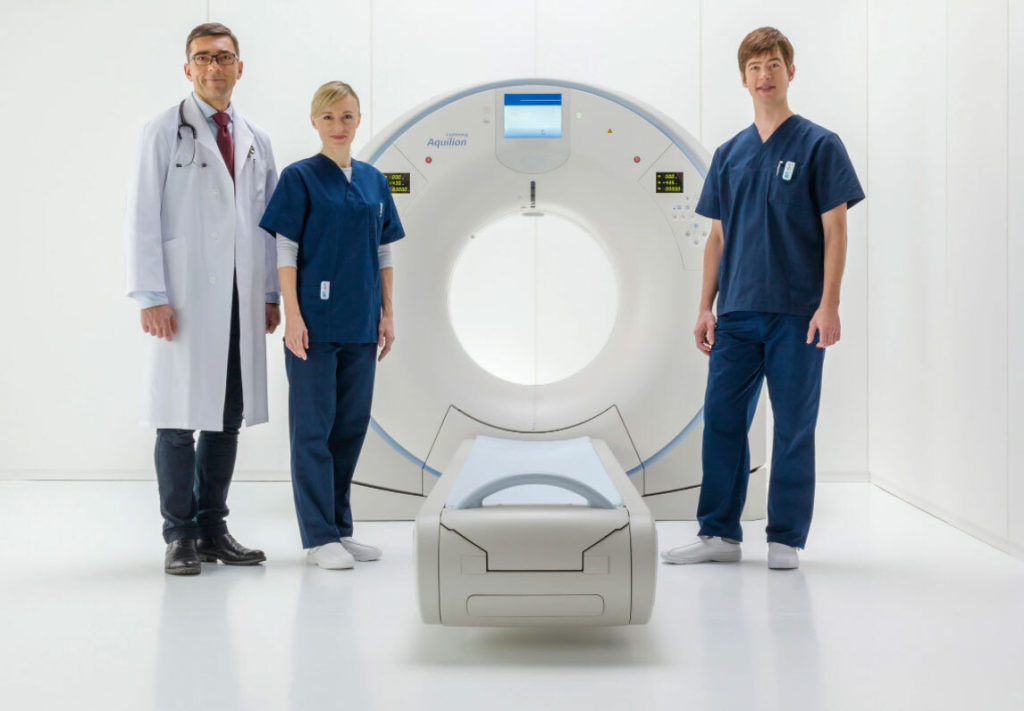What are contrast materials?
If you have read our blog posts about MRIs and CT scans, you may have noticed that we mentioned contrast materials. While the name itself sounds like something you would find in an art class, these materials are actually extremely useful when using imaging to diagnose a patient.
So what exactly are contrast materials?
Contrast materials are substances that can change the way that imaging tools react with your body. They do this by creating a contrast between selected parts of the body and the surrounding tissue which helps prove the visibility of organs and blood vessels.
Iodine and barium-sulfate are the substances most commonly used in contrast materials. Iodine is a naturally occurring chemical element frequently used intravenously while barium-sulfate is generally taken orally. When these items enter the body, they block the ability of x-rays to travel through them and any areas that have contrast materials in them will change their appearance on CT images.
Are they safe?
Contrast materials are safe to use and usually have very mild side effects such as diarrhea, nausea, vomiting, or constipation. However, it is important to let your doctor or imaging service know if you have ever had any previous allergic reactions to contrast materials or are allergic to any food, drugs, preservatives, dyes, or animals. It is also important that they know if you are taking any medications or herbal supplements or have any history of heart disease, asthma, thyroid problems, or kidney disease.
Although most people have little to no reaction to contrast materials, there is a slight of having more severe symptoms. If you experience itching, hives, swelling of the throat, or difficulty breathing after taking contrast materials, you may be having an allergic reaction and you should tell your doctor immediately.
How are they administered?
Depending on the part of the body that they will affect, contrast materials can enter the body in three different ways. They can be taken orally, given rectally, or injected directly into a blood vessel. For example, contrast materials taken orally can be used in CT imaging of the upper GI tract while materials inserted in the rectum can be used for the images of the lower GI tract. Intravenous materials can help doctors when they are looking at the brain, breast, or soft tissues.
If you take the materials orally, you will be requested not to eat for a few hours prior and there may be a slightly unpleasant taste. If the materials are injected, you may experience a slight pinch followed by a warm, flushed sensation and a slightly metallic taste in your mouth. This generally lasts only for a few minutes.
Barium-sulfate is later expelled from your body through defecation and your bowel movements may be white for a few days after the procedure. It is a good idea to drink plenty of water as well since it will help your body flush the materials out faster.
Need help?
If your doctor has suggested a CT scan or MRI, please do not hesitate to give us a call to schedule an appointment. Our team will be happy to have you in and out and get your reports in hand within 24 hours.

